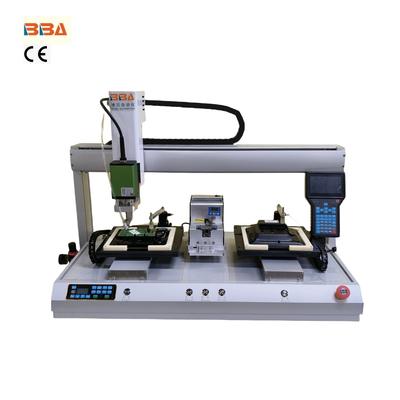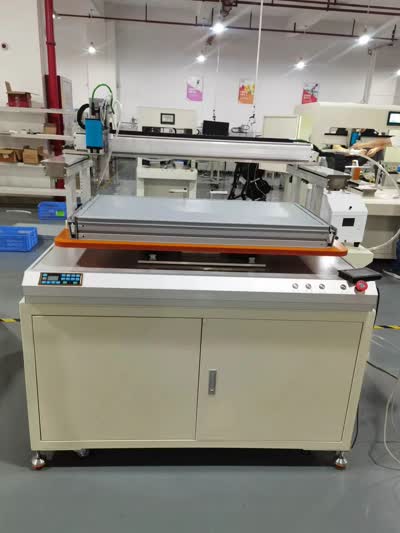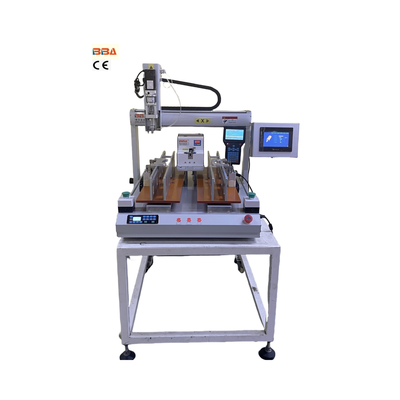Multi-Axis Screw Fastening Systems | Automotive Assembly Automation

Automotive Applications of Multi-Axis Screw Fastening
The modern automotive assembly line is a symphony of precision, where speed, accuracy, and reliability are non-negotiable. At the heart of this complex operation lies a fundamental process: screw fastening. While a simple screwdriver suffices for basic tasks, the intricate and safety-critical nature of vehicle manufacturing demands far more sophisticated solutions. This is where multi-axis screw fastening systems emerge as a transformative technology, driving efficiency and quality to unprecedented levels.
Beyond Single-Point Fastening: The Power of Multi-Axis Systems
Traditional single-spindle fastening systems complete one screw at a time. While effective for some applications, they can become a bottleneck in high-volume production environments like automotive manufacturing. Multi-axis systems, in contrast, are engineered to drive multiple screws simultaneously in a single, programmed operation. These systems integrate several spindles, often arranged in a custom configuration, onto a single robotic arm or gantry. This architecture allows for the concurrent fastening of numerous screws within a specific component or sub-assembly, drastically reducing cycle times and enhancing overall throughput.
Key Applications Transforming Automotive Assembly
The versatility of multi-axis fastening makes it indispensable across various stages of vehicle production. Key application areas include:
- Engine and Powertrain Assembly: Components like cylinder heads, valve covers, and transmission cases require numerous screws to be torqued to precise specifications in a specific sequence. Multi-axis systems ensure perfect clamp load distribution and seal integrity, which is critical for engine performance and longevity.
- Interior and Dashboard Installation: Dashboards, consoles, and door panels are assembled using a multitude of fasteners. A multi-axis head can secure all attaching points in one swift movement, minimizing the risk of misalignment and preventing squeaks and rattles that compromise cabin comfort.
- Chassis and Body-in-White (BIW): While welding dominates BIW, screw fastening is crucial for attaching brackets, sensors, and various trim components. Multi-axis solutions provide the speed needed to keep pace with the rapid cycle times of body shops.
- Electronics and Sensor Modules: Advanced Driver-Assistance Systems (ADAS), infotainment units, and control modules are sensitive electronic components. Multi-axis systems offer the gentle yet precise handling and accurate torque control required to avoid damaging these delicate but essential parts.
Tangible Benefits for Automotive Manufacturers
The adoption of multi-axis screw fastening technology delivers a compelling return on investment through several critical benefits:
- Dramatically Increased Productivity: By fastening multiple screws at once, cycle times can be reduced by 50% or more compared to sequential methods, directly increasing output.
- Unmatched Consistency and Quality: Every spindle is programmed with precise torque and angle parameters, ensuring every screw is fastened identically. This eliminates human error and guarantees consistent quality, reducing the risk of recalls.
- Enhanced Data Traceability: Modern systems record torque and angle data for every single screw tightened. This creates a complete digital traceability record, which is invaluable for quality audits and root cause analysis.
- Optimized Floor Space: Replacing multiple single-spindle units with one compact multi-axis system frees up valuable floor space on the crowded assembly line.
- Improved Ergonomics and Safety: Automating the fastening process removes operators from repetitive manual tasks, reducing the risk of repetitive strain injuries and enhancing overall workplace safety.
As automotive design continues to evolve, the flexibility and intelligence of multi-axis fastening systems will become even more critical. They represent a key technological pillar in the industry's relentless pursuit of manufacturing excellence, ensuring that every vehicle that rolls off the line is built to the highest possible standard.
| Product Name | Applicable industries |
| Screw Locking Robot | Toy and Game Console Production |


